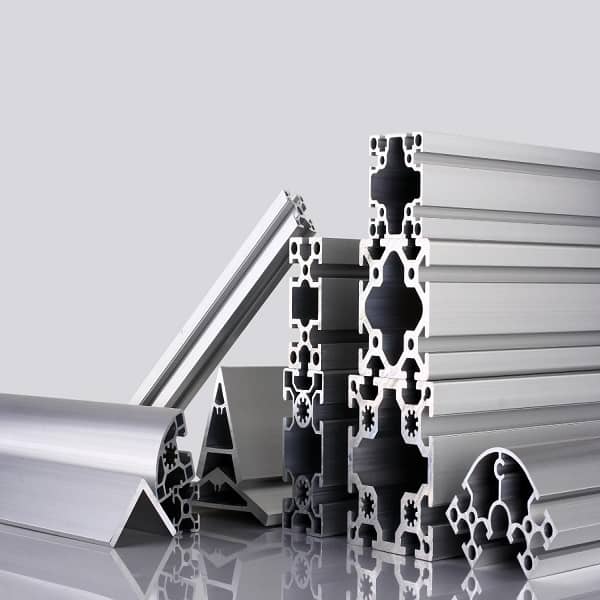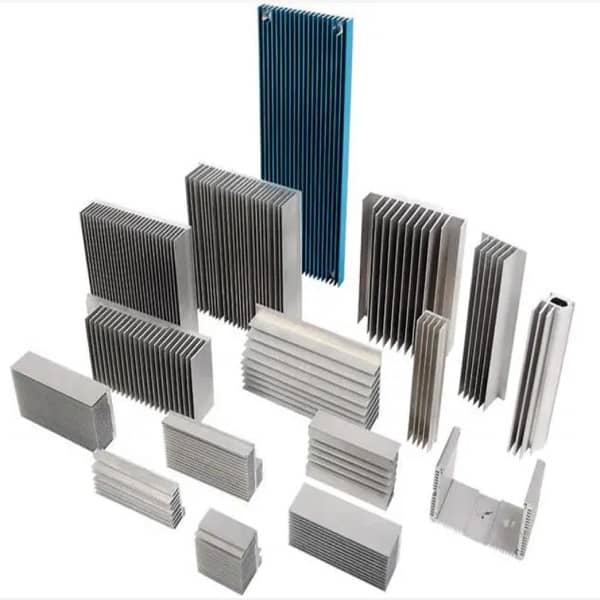China OEM industrial aluminum profiles extrusion supplier Top Metal Manufacfure can provide Extruded aluminum profiles (aluminum extrusion profile ) is used for a wide range of purposes, including components of the International Space Station, windows frame and automotives, building facades, door frames, and curtain walls.
An aluminum profiles or aluminium extrusion profiles, also called aluminum frame, is made from the extrusion process by pushing aluminum billets through a metal die to get the standard or custom shapes, and comes in various textures, colors and brightness
Aluminium extrusion profiles have a wide range of applications in many industries. In the construction industry, they are commonly used for building facades, window frames, door frames, and curtain walls. The lightweight nature of aluminium makes it an ideal choice for large-scale construction projects, where the weight of the building materials is a critical factor.
In the transportation industry, aluminium extrusion profiles are used for body panels, frame components, and other structural elements in vehicles. The lightweight nature of aluminium makes it an excellent choice for improving fuel efficiency in cars and trucks, while its strength and durability ensure that it can withstand the stresses and strains of transportation.
In the electrical industry, aluminium extrusion profiles are used for heat sinks, enclosures, and other components that require excellent thermal conductivity. The high thermal conductivity of aluminium allows it to dissipate heat efficiently, making it an ideal material for components that generate heat during operation.
6061 6063 Aluminum profiles manufacturer Top Metal from China.
Aluminum profiles can be divided into 1024, 2011, 6063, 6061, 6082, 7075 and other alloy grades of aluminum profiles, of which 6 series is the most common. The difference between different grades is that the ratio of various metal components is different, except for commonly used aluminum profiles for doors and windows In addition to architectural aluminum profiles such as 60 series, 70 series, 80 series, 90 series, and curtain wall series, there is no clear model distinction for industrial aluminum profiles, and most manufacturers process them according to the actual drawings of customers.
Aluminum profile is a profile made of aluminum as the main component, which is often used in construction, decoration, machinery manufacturing and other fields. Aluminum profiles have the characteristics of light weight, high strength, corrosion resistance, and easy processing, so they are widely used in various fields. Common aluminum profiles are aluminum alloy profiles and pure aluminum profiles.
Aluminum alloy profiles are made by alloying aluminum with other metal elements, which have better strength and corrosion resistance.
Pure aluminum profiles are made of pure aluminum, which has better thermal conductivity and electrical conductivity. The shapes of aluminum profiles are various, and the common ones are flat type, angle type, round tube type, square tube type and so on. According to different application requirements, different shapes of aluminum profiles can be selected for processing and installation.
Aluminum profiles have good plasticity and can be made into profiles of various shapes and sizes through extrusion, stretching and other processing techniques. At the same time, aluminum profiles can also undergo secondary processing such as cutting, welding, and drilling to make them better adapt to various use environments and needs. In the field of construction, aluminum profiles are often used to make window frames, door frames, curtain walls, sun rooms, etc. In the field of machinery manufacturing, aluminum profiles are often used to make conveyor belts, conveyor lines, display racks and other equipment. In the field of decoration, aluminum profiles are often used to make ceilings, partitions, furniture, etc. In short, aluminum profile is an important building material and mechanical material with broad application prospects and market demand.
The extrusion process also allows manufacturers to incorporate features such as slots, grooves, and holes into the profile. This eliminates the need for additional machining, reducing the production time and cost of the component. The design flexibility of aluminium extrusion profiles also enables manufacturers to create complex shapes that may not be possible with other manufacturing methods.
Aluminium extrusion profiles are also a sustainable manufacturing option. Aluminium is a highly recyclable material, and the extrusion process generates minimal waste. Additionally, extruded aluminium profiles can be cut to the exact length required for the application, reducing material waste further.
In the industrial sector, aluminium extrusion profiles are used for conveyor systems, machinery frames, and other components that require high strength and durability. The lightweight nature of aluminium also makes it an ideal choice for applications that require high mobility or manoeuvrability, such as robotics or aerospace.
Aluminum profiles have such surface treatment
1. Anodized aluminum
2. Electrophoretic coating of aluminum
3. Powder coated aluminum
4. Wood grain transfer aluminum
5. Fluorocarbon sprayed aluminum
6. Polished aluminum (divided into mechanical polishing and chemical polishing, among which chemical polishing has the highest cost and the most expensive price)
Aluminum profiles are products born from aluminum alloys that are transformed into shaped objects through the extrusion process. Aluminum’s unique combination of physical characteristics mostly depends on this process. Aluminum extrusions are used in several fields because this metal is: Strong and stable.




